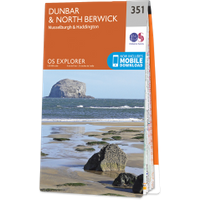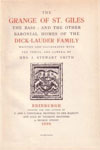

Tyninghame House owes its present appearance to major remodelling work carried out in the 19th century however under the new façade is a much older core.
There has been a residence at Tyninghame since at least 1094, when it was named in a charter from Duncan II to the monks of St Cuthbert. Some time after 1107 (and certainly before 1250), the lands of Tyninghame passed to the bishopric of St Andrews. In the 13th century, when the Bishops of St Andrews used Tyninghame as a country retreat, it was described as a tower house.
In the 16th century Tyninghame was leased to Robert Lauder of The Bass by Andrew Forman, the Bishop of St Andrews, and the Lauders used it as their winter residence, spending their summers at Bass Castle on the Bass Rock. In 1535 Forman’s successor, James Beaton, sold Tyninghame to Robert’s son, also Robert Lauder of The Bass.
This Robert’s son, George Lauder of The Bass, inherited Tyninghame upon the death of his father in 1576. Following his own death in 1611 his wife Isabella made additions to Tyninghame in 1617, at which point it was described as being an L-plan castle with walls up to 2.1 metres thick.
By this time the Lauders were heavily in debt, and in 1621 Tyninghame was sold to John, Lord Murray of Lochmaben for “200,000 merkes”. In 1628 Murray, now styled Lord Murray of Tyninghame, 1st Earl of Annandale, sold the castle to Thomas Hamilton, the 1st Earl of Haddington, for the same amount that he had paid for it seven years earlier.
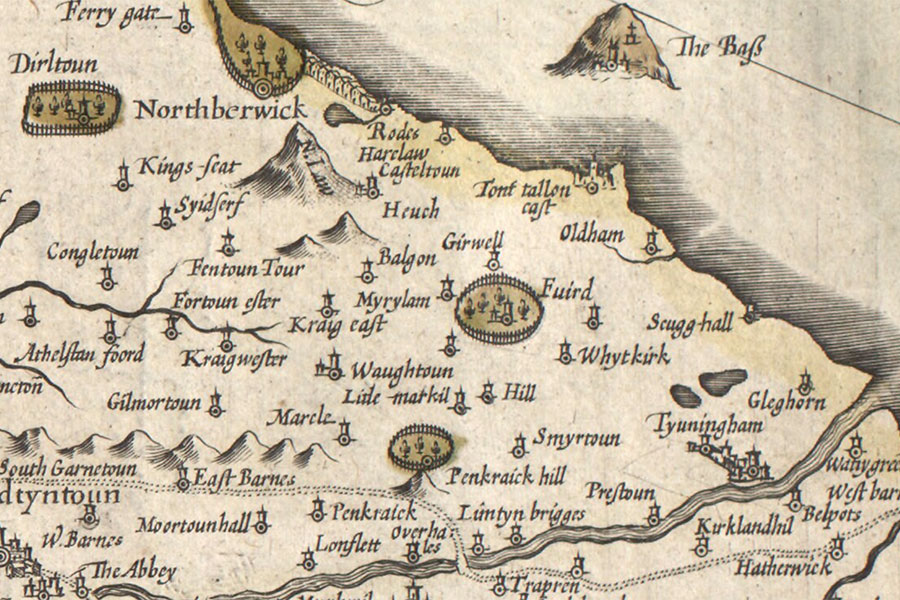
Hendrik Hondius, Amsterdam, 1630map image courtesy of NLS
At some point in the 17th century, or possibly earlier, Tyninghame was extended to the east so that it formed three sides of a courtyard, the north and west wings having formed the old L-plan castle. Further buildings were added to the north and south-east.
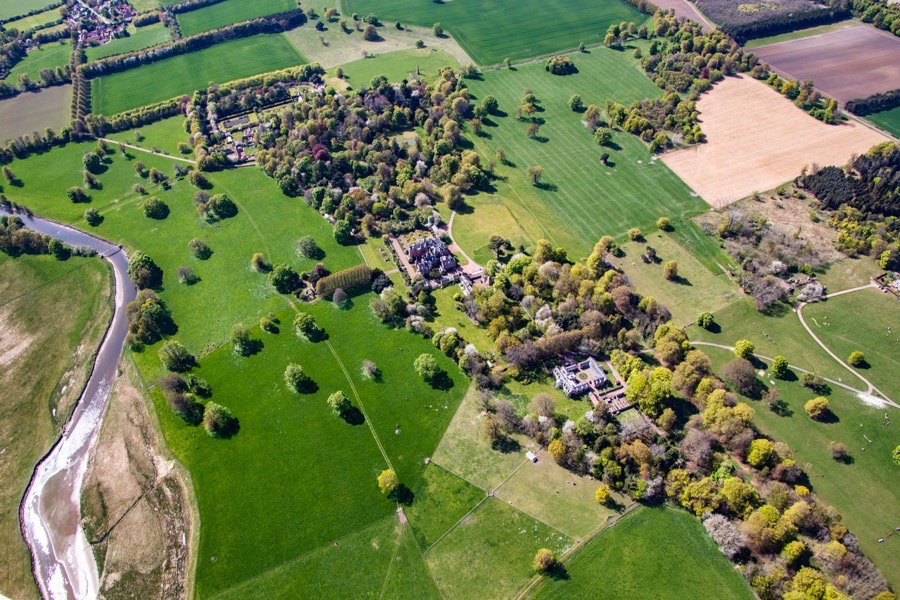
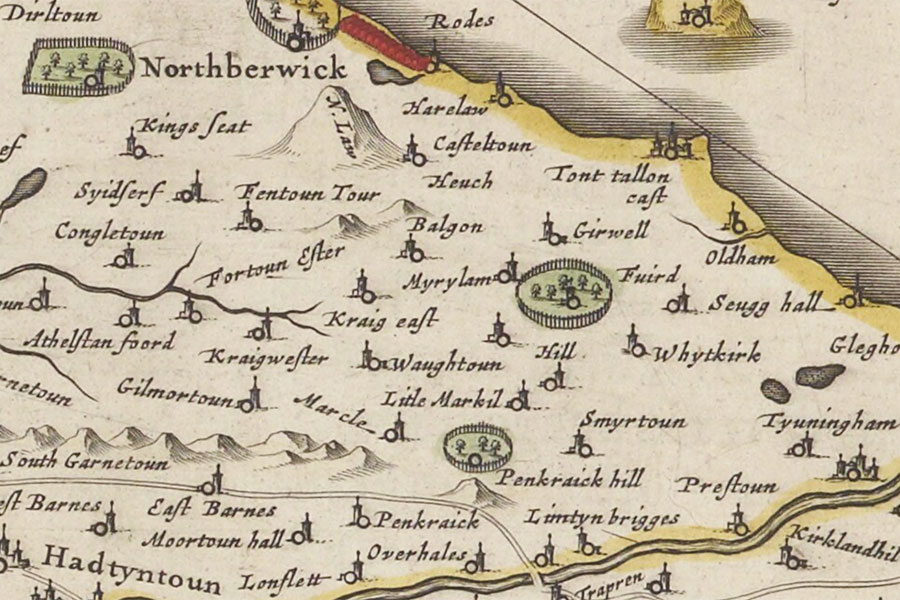
Joan Blaeu, Amsterdam, 1654map image courtesy of NLS

John Adair, 1682map image courtesy of NLS
In 1791 Charles Hamilton, the 8th Earl of Haddington, carried out some renovations, but in 1829 Thomas Hamilton, the 9th Earl, undertook far more substantial alterations. He commissioned William Burn to modernise Tyninghame. Burn added a porch, bay windows, lengthened the west wing, added a new corridor to the side of the south-east wing, built baronial turrets, added more windows, and resurfaced the entire building in red sandstone.

Following the death of George Baillie-Hamilton, the 12th Earl of Haddington, in 1986, the 13th Earl made Mellerstain House his main residence, and Tyninghame was sold and converted into flats by Kit Martin.
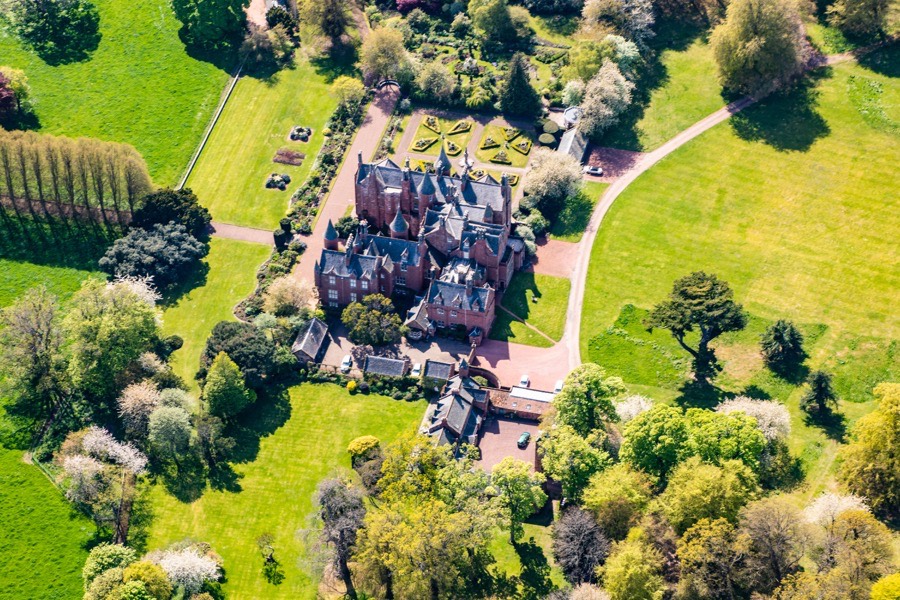
Alternative names for Tyninghame House
Tiningeham; Tinninghame; Tyningham Castle; Tynningham; Tynninghame House; Tyuningham


